Taxis are expensive, and buses can be confusing for first-timers. In Tokyo, the train is the most efficient mode of transportation. Tokyo has an extensive and expansive railway system. Wherever it is you’re going, there is most likely a train station very close to it.
Tokyo by train can be a bit overwhelming at first, but it’s easy once you get the hang of it. First, bear in mind that the network is used by almost a dozen operators, including those serving the suburbs. However, in this article, let’s focus on the three companies that serve Central Tokyo: JR East, Toei Subway, and Tokyo Metro Subway. Each of them operate multiple lines that get so entangled, it’s amazing how the Japanese make it work.
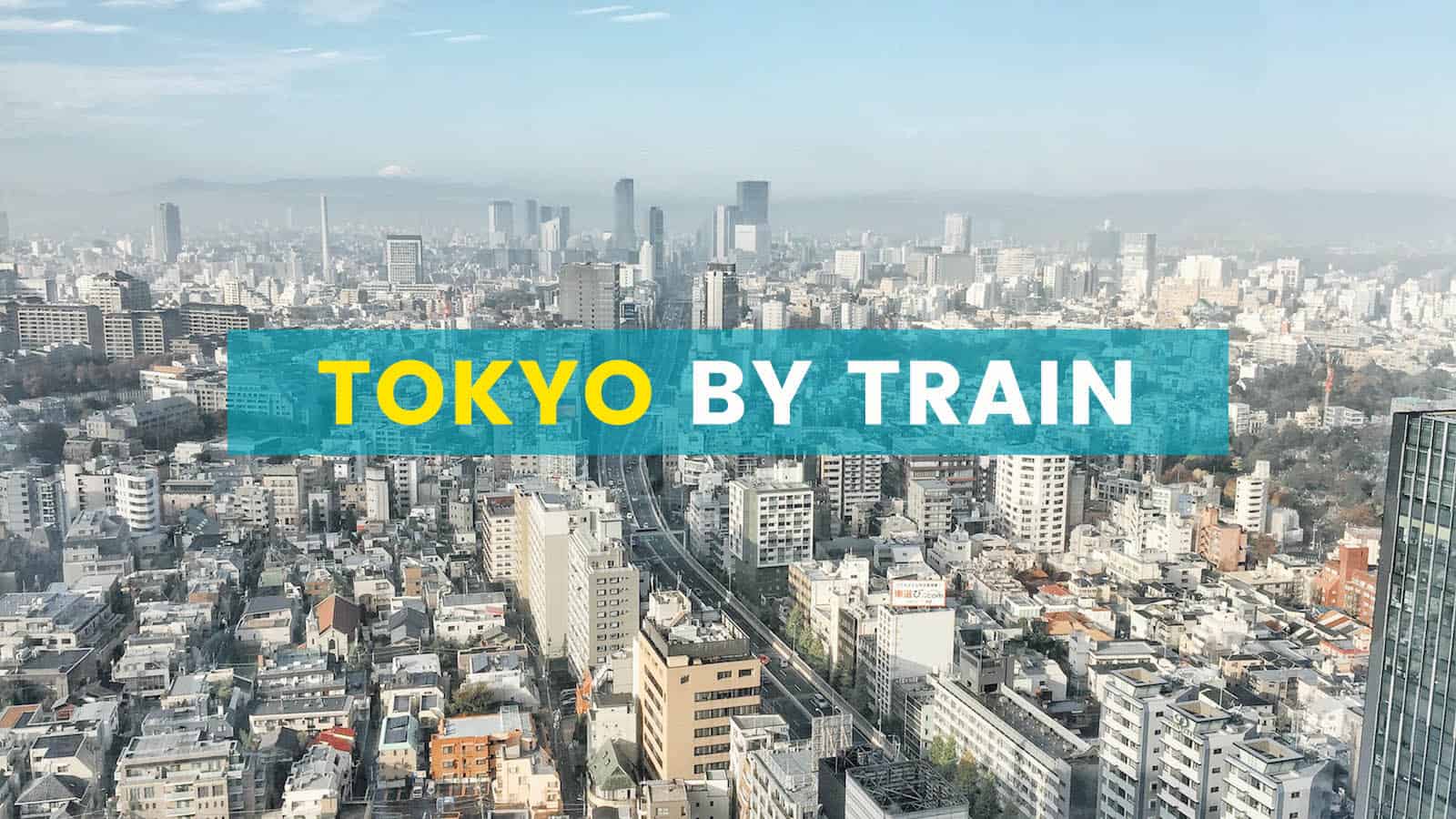
JR East
JR East controls the all-important JR Yamanote Line, a train loop that runs around Tokyo, linking the city’s key areas including Ueno, Shinjuku, Shibuya and Shinagawa. It also marks the boundary of Central Tokyo. The area within the loop is considered Central Tokyo.
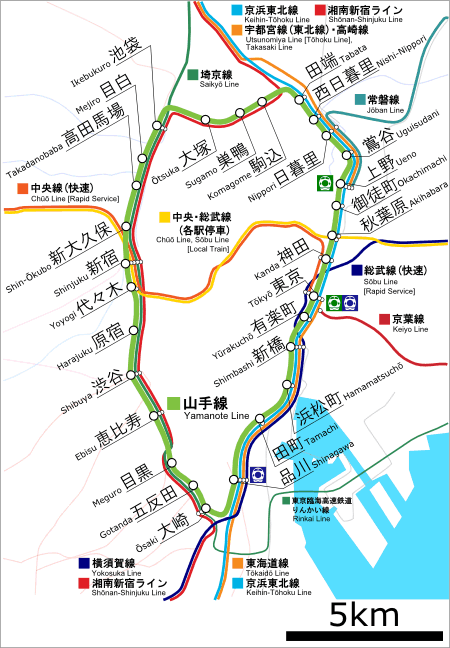
Expectedly, this line is used by a good fraction of the population (which is me saying that it’s often crowded, hehe). Aside from Yamanote, JR also runs other lines including Chuo Main, Chuo-Sobu, and the Shinkansen (bullet train).
Subway Lines
The subway lines are operated by Tokyo Metro and Toei. Although separate companies, these two are in great synergy. Often, you don’t need to exit the gates and buy new tickets even if you switch from Toei to Metro lines. (There are cases when you do, though.) Subway lines are marked with an assigned letter in a color-coded circle. For example, Shinjuku Line’s mark is an S in a leaf green circle. Mita Line’s mark is a the letter I in a blue circle. Remember these marks and the companies’ logos because this is how you’ll find them.
Tokyo Metro Subway Lines
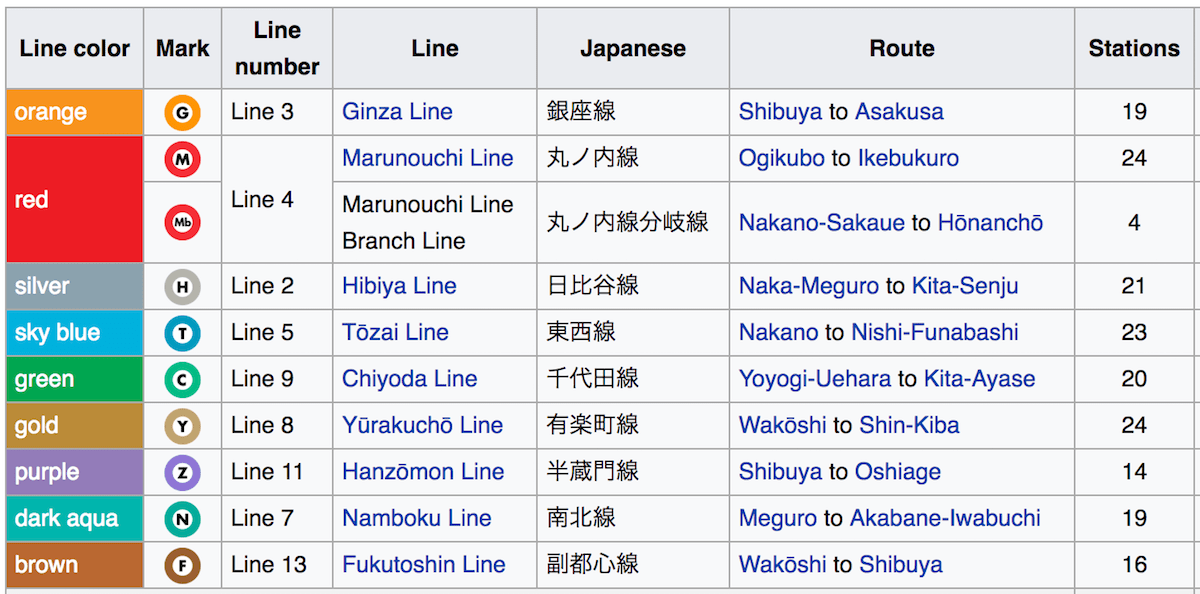
Toei Subway Lines

You might be thinking, “Oh cool. That looks easy.” Wrong. It seems easy to understand now, but if you’re a Tokyo newbie, it’s a lot more difficult in practice. These lines are so entangled, and when they meet in major stations like Shinkuku or Tokyo, things get even more complicated. Even I, who have been to Tokyo four times, and my sister, who has been living in Tokyo for years, sometimes get awfully lost.
Types of Trains
Aside from the lines, you also might need to know the different train types:
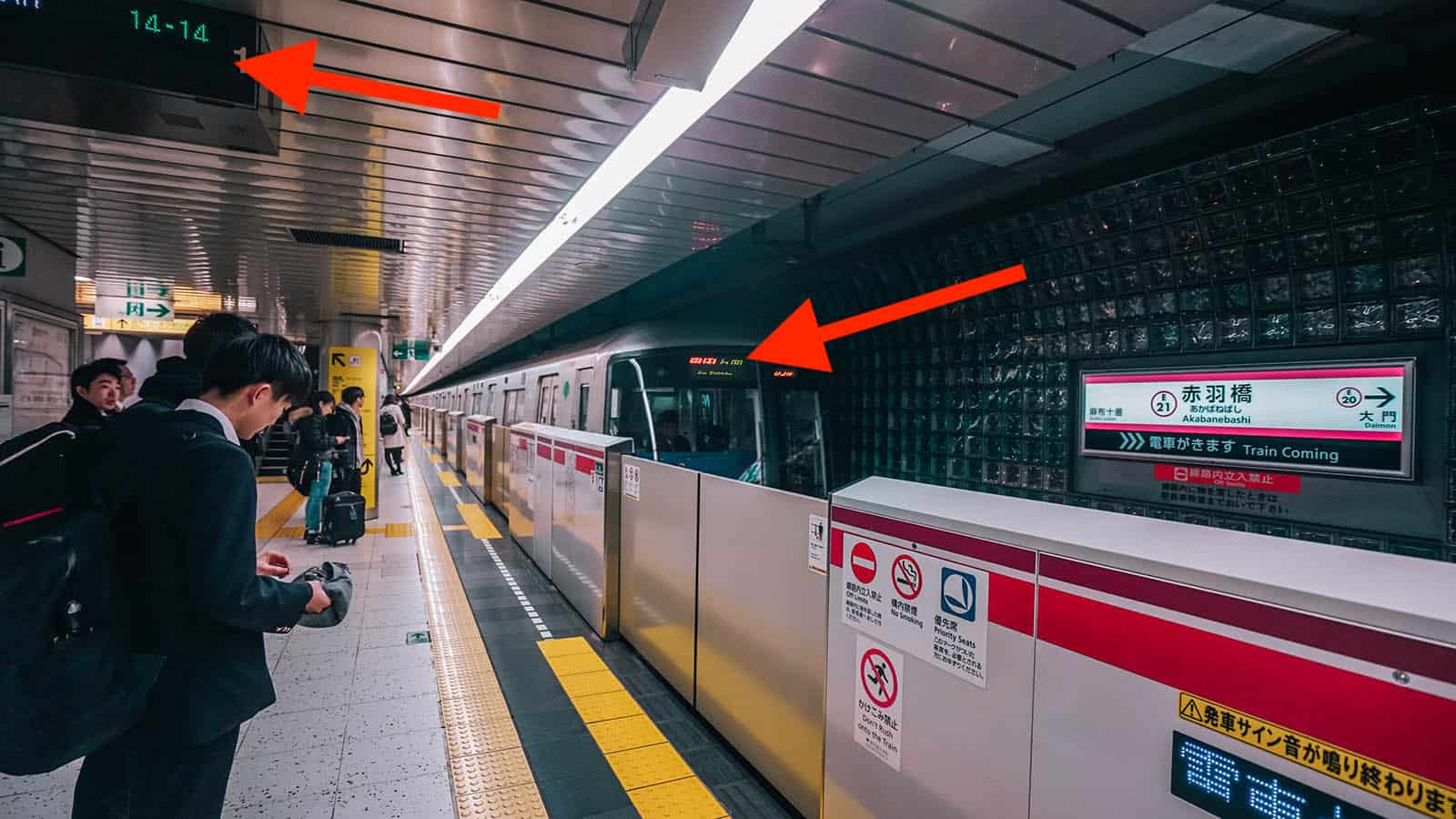
- Local Trains are those that stop at every single station of the line. EVERY. SINGLE. STATION. If your stop is 20+ stations away, it can take a lot of time.
- Rapid Trains are those that skip some stations. Same price as local trains. Same platforms, too.
- Express Trains skip even more stations.
- Limited Express stop only at major stations. Additional fee is usually required.
If it entails waiting only a few minutes on the platform, I would usually just choose a rapid or express train even when the a local train is already approaching. WARNING, though: Board the non-local trains only if you’re sure it will make a stop at your station. You don’t wanna skip your stop. True story. Hahaha.
How to Travel By Train using Single Tickets
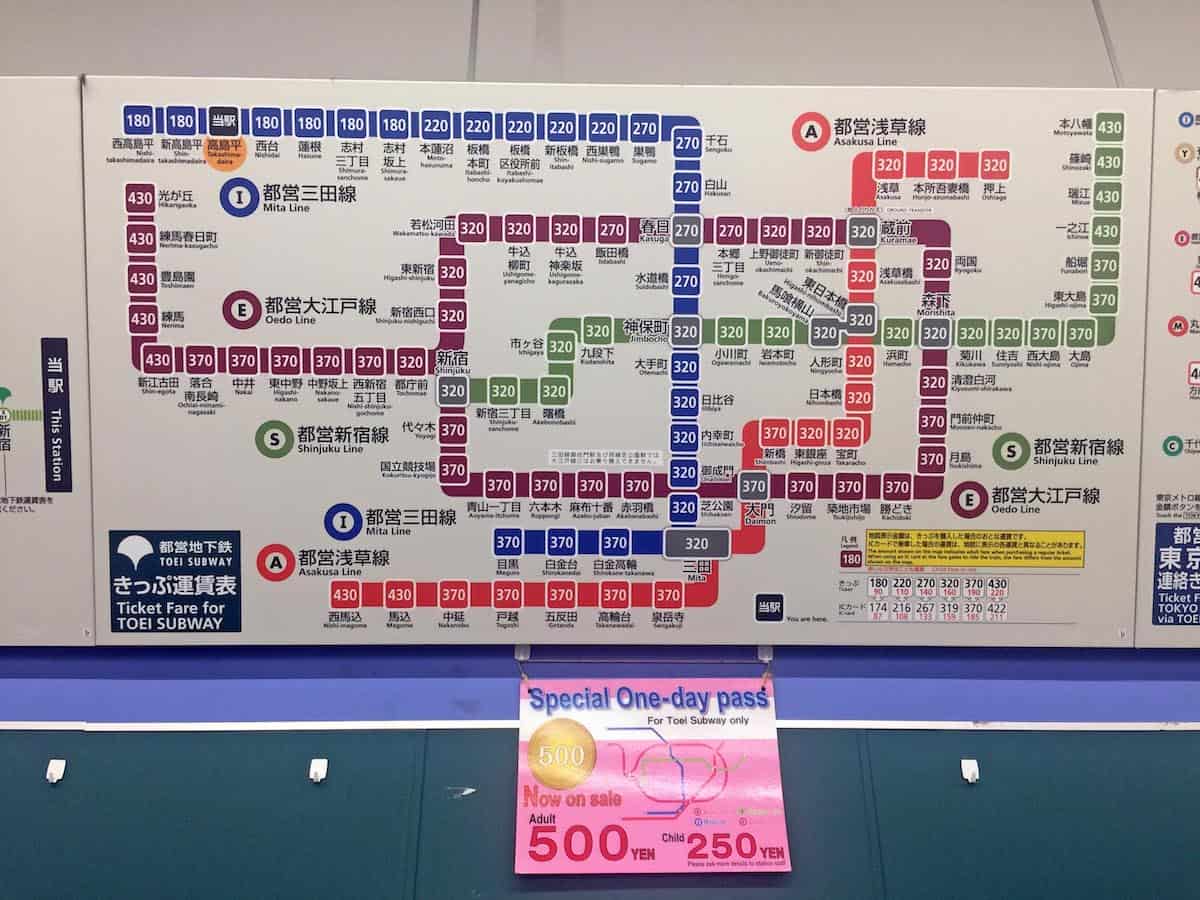
- On your web browser, go to Hyperdia.com/en/. Enter your origin and the station where you’re going. It will then display possible route options including how much the ride costs and transfers needed to get there. At the train station, you can double check the price. Just look at the route map, usually above the ticket machines. The map displays the price based on distance. Sometimes, the map is in Japanese characters only, which is why Hyperdia is useful.
- Once you know how much you’re gonna pay, approach the ticket machines. By default, these machines display everything in Japanese characters. But there is a button there that reads ENGLISH. Press that button and you will hear a voice saying “All train information will be displayed in English.” (I said it out loud in the right intonation when I typed that. Totoo.)
- Follow the steps onscreen. Usually, you will need to press the button (next to the screen) that displays how many passengers you are and then press the corresponding price on the screen. Yep, you should know how much you should be paying before using these machines, hence the first two steps. It will then ask you to confirm your booking.
- Get the tickets that the machine will release. (If after getting the ticket you realize you made a mistake or you just change your mind, don’t worry. Just use the same ticket. Fare adjustment machines are installed at every station. Make the adjustment at the destination.)
- Feed your ticket to the ticket slots at the gate. It will emerge at the end of the gate. Pick it up again. The ticket is small so try your best not to lose it.
- Go to the right platform. To check if you’re in the right direction, check the list of stations usually displayed on a wall before the platforms. There is also a more detailed timetable in the middle of the platform.
- Wait for the right train. The estimated time of arrival of the next few trains and the train type (Rapid, Local, etc) are displayed on electronic screens above the platform.
That’s it! If you get lost or you encounter any problem, don’t hesitate to approach the staff at the window. Every station has one.
Also, if you’re an adult, don’t even try getting a ticket meant for kids just to get a discount. Children’s tickets make a distinct birdy sound when used at the gates to let the staff know that it’s really being used by kids. Yep, birdy.
How to Buy and Use Suica or Pasmo Card
Prepaid IC Cards are also available. It seldom offers discounts, but the beauty of it is that you don’t need to get a ticket each time you’re using the train. You just need to quickly hover the card over the reader and you’re through.
What’s the difference between Suica and Pasmo? The companies offering it, mainly. Suica is sold by JR while Pasmo by Toei and Tokyo Metro. However, both cards work in any Tokyo Metro, Toei, or JR line. As far as the user experience is concerned, it’s very similar.
To get one, you just need to approach one of the PASMO or SUICA machines at the station. There’s no use for me to enumerate the steps here because it’s so easy. Just choose ENGLISH on the welcome screen and follow the instructions.
These cards can also be used on buses. An increasing number of shops and other establishments are also accepting these cards as mode of payment. You can even use it to buy drinks or snacks from vending machines.
Should You Get One of Those One-Day Train Passes?
A lot of them are available but I find most of them impractical. It only makes sense to use them if you’re making several train journeys in a day or two.
- Tokyo Free Kippu (Tokyo Tour Ticket) allows you unlimited access to any JR, Toei, or Tokyo Metro line within Central Tokyo for one day. It costs ¥1590. It only makes sense if you’ll be riding the train SEVERAL times in a day.
- Tokyo Subway Ticket grants you unlimited access to all subway lines (Toei and Tokyo metro, NOT JR). Cost: ¥800 for 24 hours, ¥1200 for 48 hours, and ¥1500 for 72 hours. Available at Narita and Haneda airport. This is a good deal only if most of the attractions you’re gonna visit are close to a subway station.
There are many other variations, but the two above are the most common.
If you decide to purchase a Tokyo Subway Ticket, we have a sample 2-day itinerary here so you can maximize the card. READ: THE BEST OF TOKYO IN 2 DAYS!
Should You Buy a JR Pass?
If you’re staying in TOKYO only, NO, you don’t need a JR Pass.
It only makes sense to get a JR Pass if you’re on a multi-city journey around Japan. For example, if you will be visiting three cities in 7 days, it could be a great deal.
Before you purchase one, know that the JR Pass can only be used on JR line rides. You can’t use it on Toei or Tokyo Metro rides. So if you will be staying in Tokyo the entire trip, a JR Pass isn’t really worth it.
If your itinerary involves taking long-distance trains often and you’re staying for 7 days, you can save money by getting a Train Pass.
✅ CHECK LATEST JR PASS RATES HERE!
Top Budget Hotels in Tokyo
Top budget and capsule hotels based on Agoda customer reviews.

- MyCUBE by MYSTAYS Asakusa Kuramae. Check Rates & Availability! ✅
- Capsule Hotel Anshin Oyado Tokyo Akihabara. Check Rates & Availability! ✅
- GLANSIT AKIHABARA COMFORT CAPUSULE HOTEL. Check Rates & Availability! ✅
- Capsule Hotel Anshin Oyado Premier Tokyo Shinjuku Station. Check Rates & Availability! ✅
- KEIKYU EX INN Akihabara -Tokyo Akihabara. Check Rates & Availability! ✅
- Dormy Inn Premium Tokyo Kodenmacho – Nihonbashi. Check Rates & Availability! ✅
- Hotel Wing International Select Asakusa Komagata. Check Rates & Availability! ✅
Search for more: Tokyo Hotels
2️⃣0️⃣1️⃣6️⃣ • 1️⃣2️⃣ • 2️⃣8️⃣
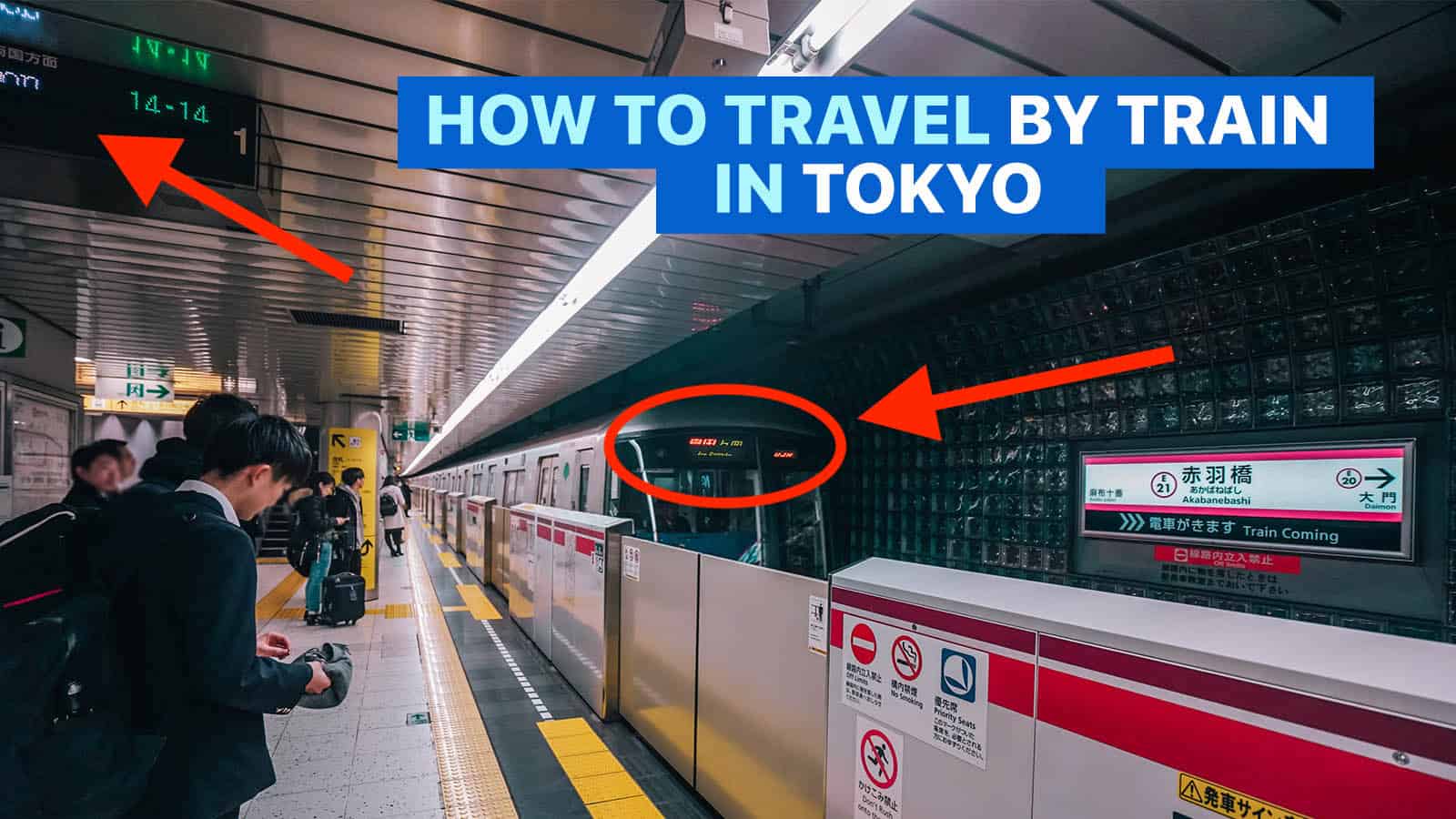

























Hi! Puede po ba kayong gumawa ng Travel guide sa Japan kung SAN nag taping sila Empoy ung movie na “Kita Kita”. Please
Hi Lomi! That’s in Sapporo in Hokkaido. We have travel guides for Sapporo and for a multi-city tour in Hokkaido:
SAPPORO ONLY: https://www.thepoortraveler.net/2017/02/sapporo-travel-guide-hokkaido-japan/
HOKKAIDO MULTI-CITY: https://www.thepoortraveler.net/2018/02/hokkaido-tour-itinerary/
Hello po. Between suica and pasmo card, which one is better?
Personnaly, anong ginamit niyo sa Japan IC cards or JR pass? Thanks
Hi Vinz, similar lang yung SUICA and PASMO, so okay lang either.
Between IC cards and JR Pass, they’re completely different. JR Pass is for long-distance multi-city travels. IC Card is a stored-value card. If you’re staying in just one or two cities, you don’t need a JR Pass. We explained that here: https://www.thepoortraveler.net/2017/03/is-jr-pass-worth-it/
hi po ask ko lang po, pwede po ba gamitin ang ICOCA sa Tokyo? mas makakatipid po ba ang ICOCA + 72-hour unlimited tokyo pass? 4 days po kasi ako sa OSAKA and Kyoto and another 4 days naman sa Tokyo. sa city lang naman po ako magiikpt ikot at hindi na sa malalayong puntahan na mahal ang gastos para may reason ako para bumalik :-)
Hi Cha, yes, ICOCA works in Tokyo.
Whether or not makakatipid ka sa 72-hour subway ticket depends sa itinerary mo. If yung mga pupuntahan mo is near a subway station, then gora. But remember JR is not covered by the subway ticket so if mas JR ang stations, di sya worth it.